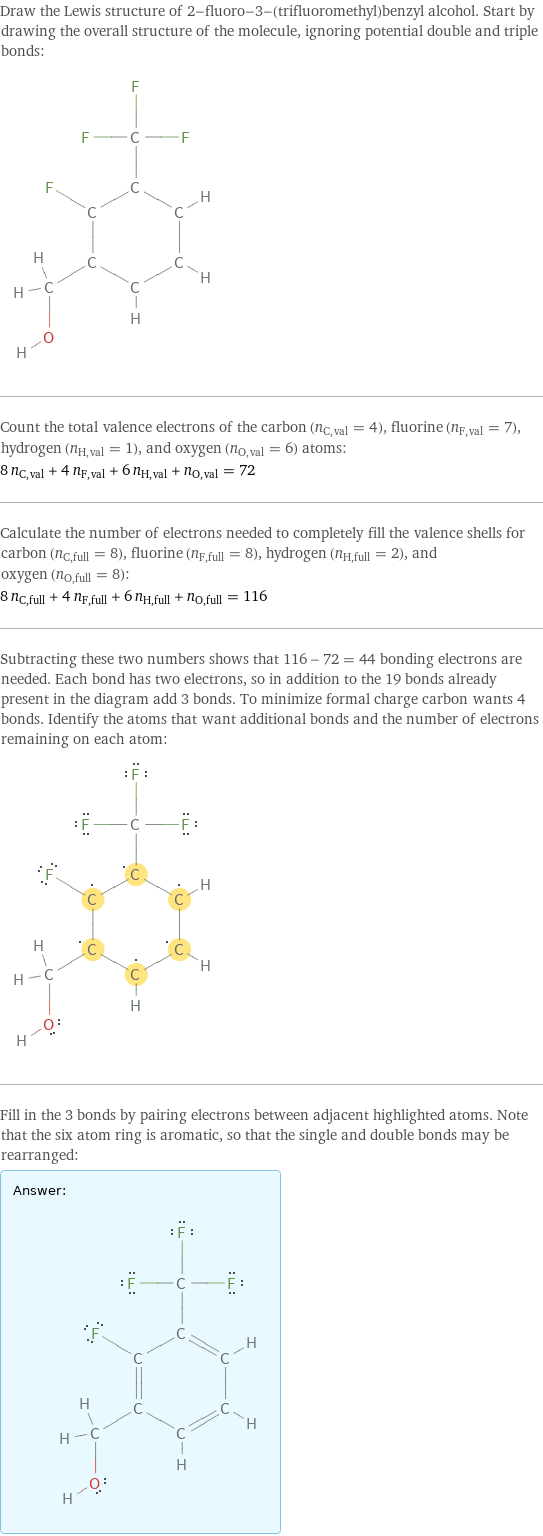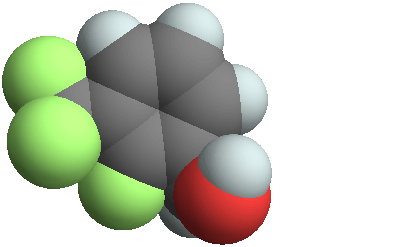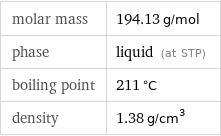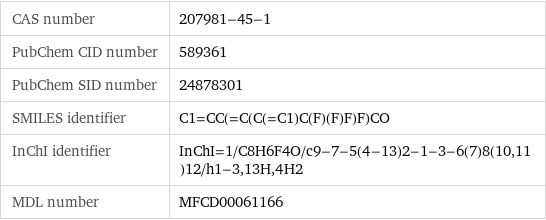Input interpretation

2-fluoro-3-(trifluoromethyl)benzyl alcohol
Chemical names and formulas
![formula | FC_6H_3(CF_3)CH_2OH Hill formula | C_8H_6F_4O name | 2-fluoro-3-(trifluoromethyl)benzyl alcohol IUPAC name | [2-fluoro-3-(trifluoromethyl)phenyl]methanol alternate names | [2-fluoro-3-(trifluoromethyl)phenyl]methanol mass fractions | C (carbon) 49.5% | F (fluorine) 39.1% | H (hydrogen) 3.12% | O (oxygen) 8.24%](../image_source/85a2f1fc7435356108c3263f17f9bfd1.png)
formula | FC_6H_3(CF_3)CH_2OH Hill formula | C_8H_6F_4O name | 2-fluoro-3-(trifluoromethyl)benzyl alcohol IUPAC name | [2-fluoro-3-(trifluoromethyl)phenyl]methanol alternate names | [2-fluoro-3-(trifluoromethyl)phenyl]methanol mass fractions | C (carbon) 49.5% | F (fluorine) 39.1% | H (hydrogen) 3.12% | O (oxygen) 8.24%
Lewis structure

Draw the Lewis structure of 2-fluoro-3-(trifluoromethyl)benzyl alcohol. Start by drawing the overall structure of the molecule, ignoring potential double and triple bonds: Count the total valence electrons of the carbon (n_C, val = 4), fluorine (n_F, val = 7), hydrogen (n_H, val = 1), and oxygen (n_O, val = 6) atoms: 8 n_C, val + 4 n_F, val + 6 n_H, val + n_O, val = 72 Calculate the number of electrons needed to completely fill the valence shells for carbon (n_C, full = 8), fluorine (n_F, full = 8), hydrogen (n_H, full = 2), and oxygen (n_O, full = 8): 8 n_C, full + 4 n_F, full + 6 n_H, full + n_O, full = 116 Subtracting these two numbers shows that 116 - 72 = 44 bonding electrons are needed. Each bond has two electrons, so in addition to the 19 bonds already present in the diagram add 3 bonds. To minimize formal charge carbon wants 4 bonds. Identify the atoms that want additional bonds and the number of electrons remaining on each atom: Fill in the 3 bonds by pairing electrons between adjacent highlighted atoms. Note that the six atom ring is aromatic, so that the single and double bonds may be rearranged: Answer: | |
3D structure

3D structure
Basic properties

molar mass | 194.13 g/mol phase | liquid (at STP) boiling point | 211 °C density | 1.38 g/cm^3
Units

Liquid properties (at STP)

density | 1.38 g/cm^3 refractive index | 1.451
Units

Chemical identifiers

CAS number | 207981-45-1 PubChem CID number | 589361 PubChem SID number | 24878301 SMILES identifier | C1=CC(=C(C(=C1)C(F)(F)F)F)CO InChI identifier | InChI=1/C8H6F4O/c9-7-5(4-13)2-1-3-6(7)8(10, 11)12/h1-3, 13H, 4H2 MDL number | MFCD00061166
Safety properties

flash point | 108.9 °C